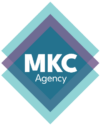How to brand your small business?- As a business owner, you want your company to stand out, make a splash and leave a mark on the people who interact with you. Your brand is an extension of your business and should be unique while packing a serious punch.
So how do you go about branding your small business? While you may have a limited budget to use toward creating your brand, there are some solid ways you can maximize your funds and build a solid branding foundation to build upon as your business grows.
Here are some tips to get started on branding your business.
Brand Identity
While the first thing that comes to mind when you say “brand” is a logo, that’s such a tiny sliver of your overall brand identity. Your brand encompasses your business; your style, your vision, your mission, the way you want to make customers feel, the way you want your visuals to represent you. Your brand identity, in a nutshell, is who you are as a company. And before you can even start putting together a kickass logo, you need to sit down and figure out who you are and what you’re all about.
Who Are You?
First, you need to pinpoint who you are as a company. What are you all about?
Some great questions to guide you through this process are:
- How would you describe your company in 3-4 words?
- What impact do you want to make in your specific industry? What difference do you hope to make?
- What is your company mission statement? What are your core values?
- What do you want to be known for? How do you want to stand out in your marketplace?
When in doubt, Small Business Branding Agencies can help with this process.
Who Are Your Customers?
It’s essential to have in mind who your target audience is. A brand that targets tweens is not going to be the same as one that targets CEOs of Fortune 500 companies. So take a minute to sketch out your ideal customer. Customer personas can be very helpful here.
Some great guiding questions here are:
- Who is your ideal customer? What age group are you targeting?
- Are you zeroing in on a specific gender?
- What job do they have? What are they looking for in the companies they work with?
- What salary and education do they have?
- What matters to them? What do they care about?
- Why would they want your product or service?
Use the answers to these questions to inform your branding strategy. If done right, your brand will connect with the audience you are trying to reach.
What’s Your Special Sauce?
Every business should have a Point of Difference (POD). This is the thing that your company offers that none of your competitors do. It’s what makes you stand out and makes what you offer more valuable than anyone else. When you figure out what your “special sauce” is, sprinkle it all over your branding. It should permeate every part of your branding strategy.
Your POD doesn’t have to be something dramatic or intense. It can be something simple, like your customer service is above and beyond your competitors’, your materials are ethically sourced, your business is deeply connected and involved in your community, you run a family business that’s been around for generations, etc. Figure out what makes you stand out and integrate it into your brand identity.
What’s Your Visual Identity?
The visual branding of your company is the most attention-grabbing and memorable part of your branding strategy. Crafting the look and feel of your brand includes several elements that all work together:
- A brand style guide: this outlines your brand fonts, color palettes, do’s and don’ts for designers, and any other design assets that will make sure anyone working on your business material is on the same page.
- A logo: the pièce de résistance. The logo is the face of your company, and all your other promotional material will be connected to it (business cards, website, banners. etc.). This is the most crucial part of your branding strategy.
- Business cards: you need a striking, on-brand tool to reach out to potential customers and get your name out there. Your logo and matching design assets should be on here.
- Website: once again, your website should match the design assets and logo you determined in your brand style guide. This is usually one of the main points of contact for potential clients, so you need to be consistent with the look and feel of your brand.
Kickstarting your brand strategy is an exciting step in your small business journey. When it’s done right, your brand will carry your business through years of growth and development and set you up on the road to success. This process can seem complex and has many moving parts; if you’re unsure about your branding strategy or need help from the pros, consider partnering with Small Business Branding Agencies to help get you off to a great start.
Looking for more marketing support as your business grows? Megan Killion Consulting is a team of experienced, professional experts who can take over your marketing and branding so you can get back to what matters. Contact us today so we can discuss your business needs and how we can help your startup thrive.

